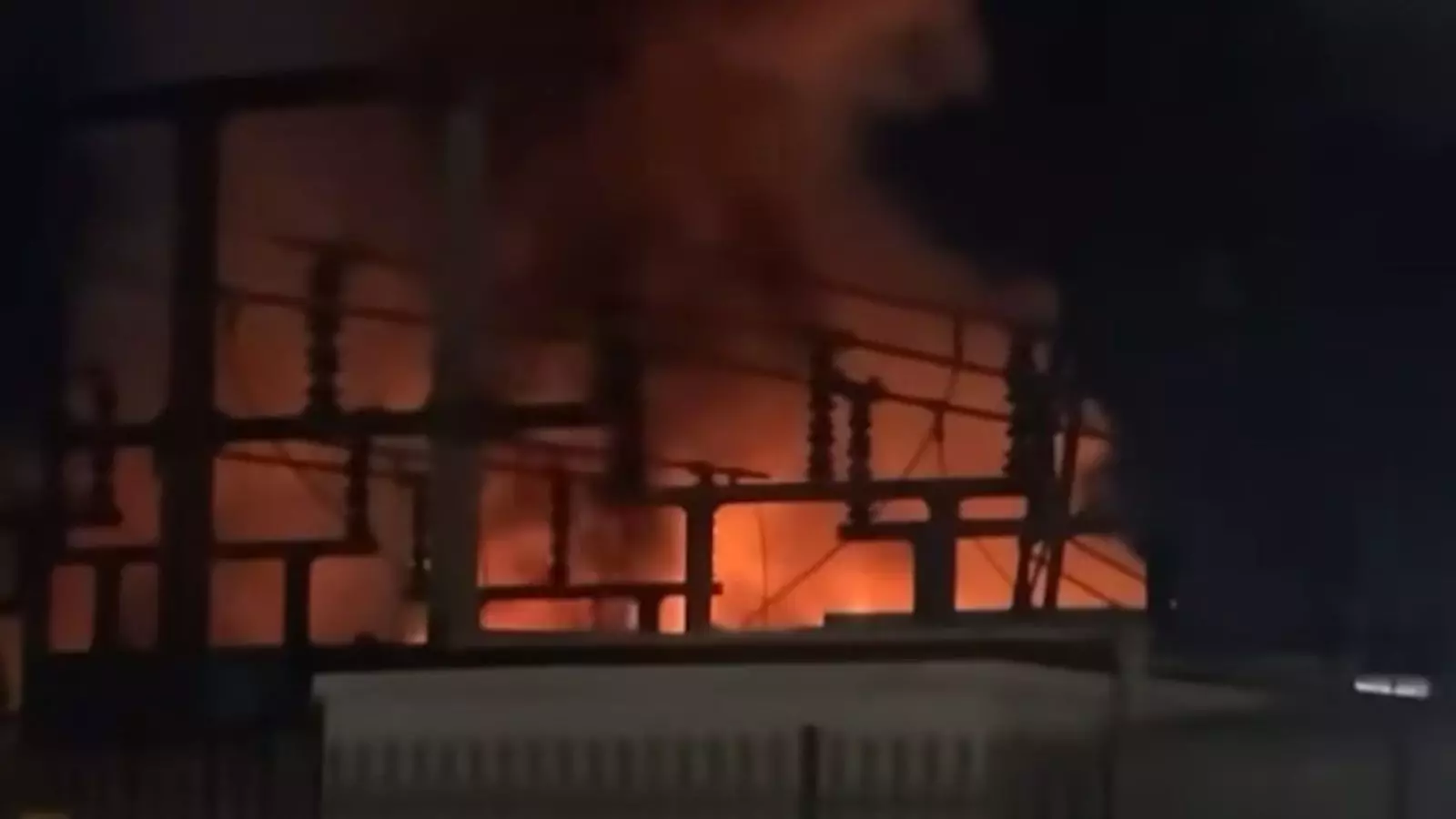In a recent major incident in South Wales, a “loud explosion” was heard, followed by a large fire on an industrial estate. Fire chiefs have declared the incident as the affected building is at risk of collapse. While there are reports of one person unaccounted for, no serious injuries have been reported so far. This article aims to critically analyze the information provided and offer a unique perspective on the incident.
Despite the alarming news of an explosion and a subsequent large fire, it is a relief to know that no serious injuries have been reported. The fact that only one person is unaccounted for suggests that the incident was not as catastrophic as it initially appeared. However, the potential risk of the building collapsing raises concerns about the structural integrity of the industrial estate and the safety measures in place.
Road closures around Severn Road in Treforest are expected to remain in effect until morning, causing inconvenience and disruptions for the local community. Hospitals in the area were on high alert and urged residents to avoid unnecessary visits to the emergency department. This precautionary measure is understandable, given the potential influx of patients in the aftermath of a major incident. However, it is crucial to assess the capacity and responsiveness of the healthcare system to handle such situations effectively.
Eyewitnesses recount the harrowing experience of being close to the incident. Scott Yorath, who works near the affected area, described witnessing the explosion and seeing metal roller shutters being blown off the building. His description of the scene as something out of a movie highlights the shock and fear that the incident induced in the local population. These firsthand accounts help us understand the intensity of the event and the resulting impact on individuals’ mental and emotional well-being.
Local councillor Karl Johnson reports that the front of the building has been “completely destroyed,” raising questions about the safety protocols and mechanisms in place to prevent such extensive damage. Additionally, a nearby car dealership may also have been affected, highlighting the potential collateral damage caused by the fire. The scale of the incident, as described by witnesses, suggests that immediate action is required to investigate the cause and prevent future occurrences.
The emergency response to the incident showcased the collaboration between various services. More than 15 police cars and 10 ambulances were deployed to the scene, with support from the fire service. The promptness and coordination of these services are commendable. Furthermore, the Welsh Ambulance Service sent additional resources, including emergency ambulances, rapid response vehicles, and a hazardous area response team. The involvement of specialized teams highlights the need for comprehensive emergency preparedness planning and resource allocation.
Several witnesses reported hearing a “massive bang” that shook houses, indicating the extent of the explosion’s impact. Jonny Foxhall, the owner of a nearby music venue, shared his experience of feeling the shockwave and seeing smoke and flames. Such accounts emphasize the far-reaching consequences of the incident on the surrounding areas and the potential dangers faced by the local population. Strict safety regulations and risk assessments need to be reevaluated to prevent future incidents with severe consequences.
The major incident in South Wales’ industrial estate serves as a reminder of the importance of emergency preparedness, infrastructure safety, and effective response systems. While the lack of serious injuries is a relief, the potential collapse of the building raises concerns about structural integrity. Eyewitness accounts and the impact on the local community underscore the need for a comprehensive investigation to ensure the incident does not repeat. The coordinated emergency response highlights the importance of collaboration and resource allocation in such situations. Moving forward, it is vital to learn from this incident and implement necessary measures to prevent similar occurrences in the future.

Leave a Reply